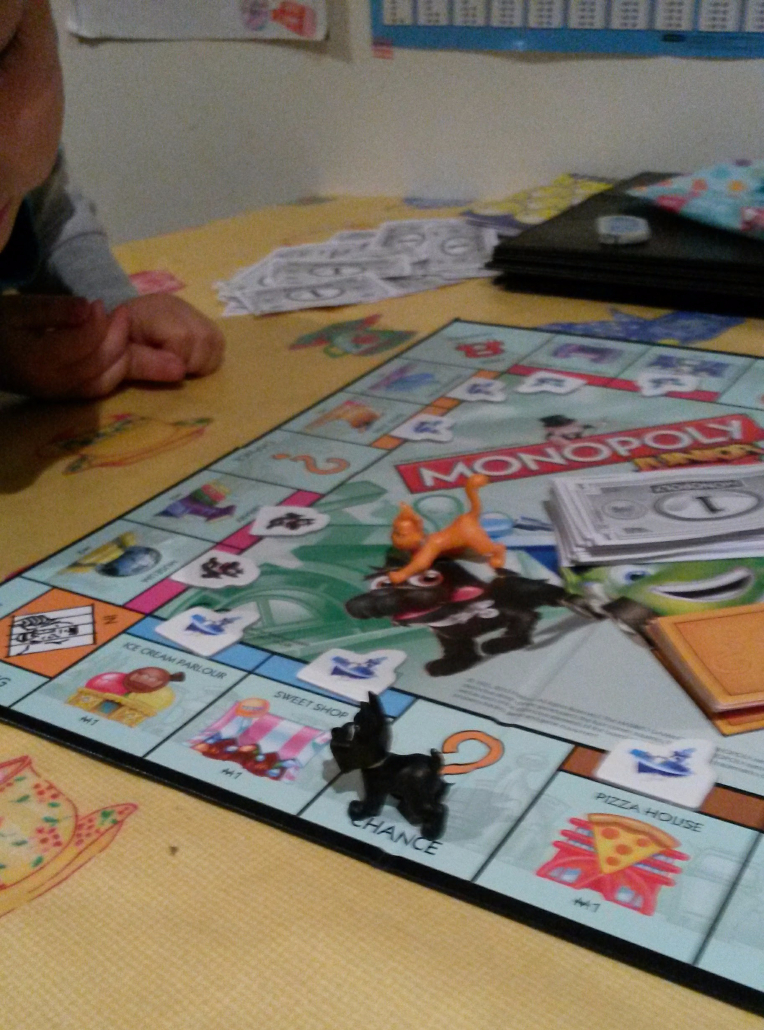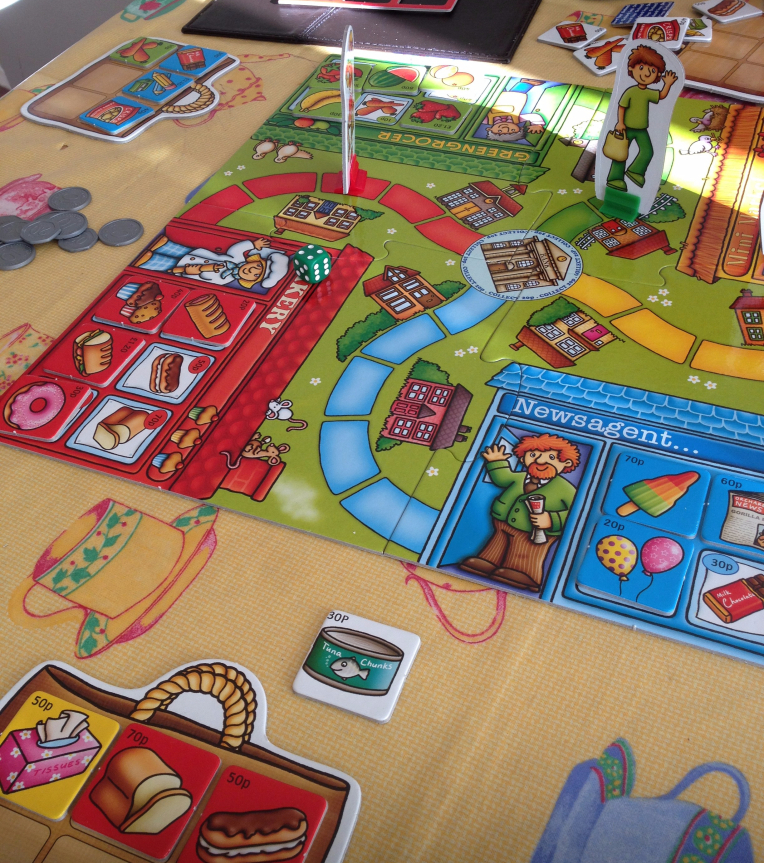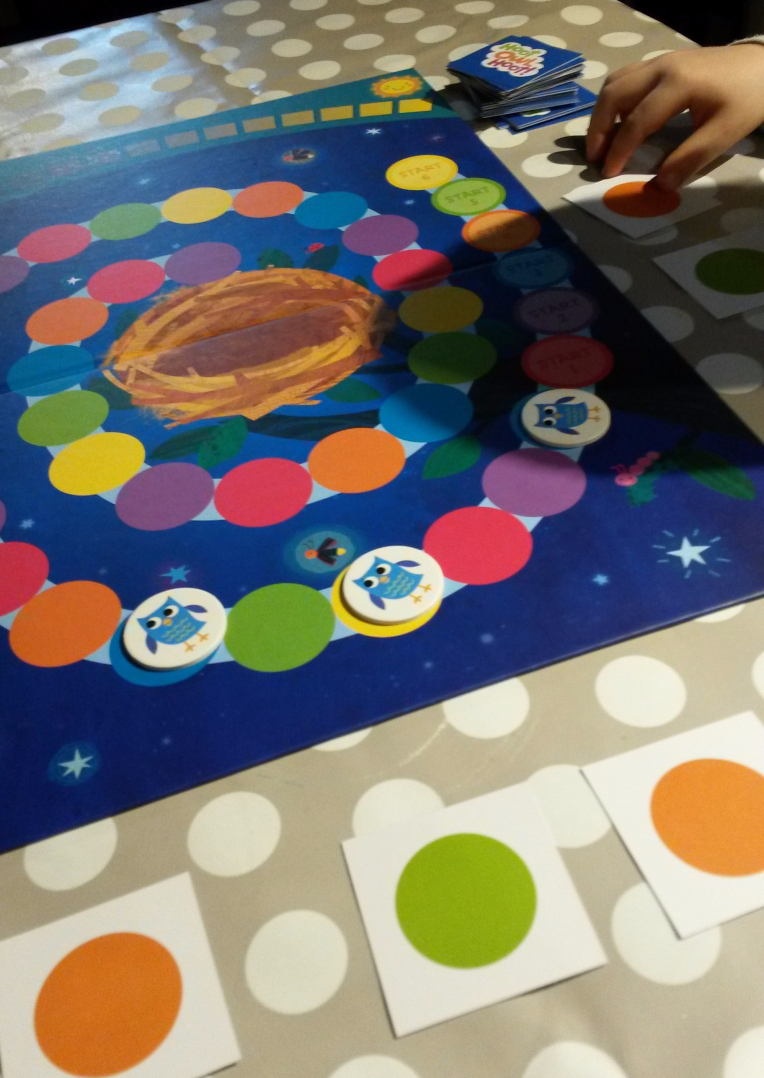My kids have reached the age when they have started weighing up options, making independent decisions and understanding the joys of cooperation and competition. And so sitting down at a table and playing a board or card game has become a pleasure – especially as they’ve also reached the stage when they can actually sit down at a table. But board games, like tables, range in quality. Enjoyment and fun can vary. So here are my two cents on some games that have been taken out of the box in my house.
(By the way, it was hard to avoid a board/bored pun in the title but that would insult both of our intelligences. And board games are not boring – not at all!)
Snakes and Ladders / Ludo
I think it’s a bit like Woody Guthrie songs and Humphrey Bogart films whereby the copyright has expired and it’s in the public domain or something because they’re usually pretty cheap – like the one I picked up on Amazon. Board game aficionados tend to look down and dismiss games like these because they a) are completely run by chance and require no skill – not even the skill of hedging your bets or pushing your luck as in Yahtzee! or the incredibly frustrating (in an incredibly good way!) Can’t Stop, and b) the players are all working independently (especially in Snakes and Ladders) and little or no interaction is needed.
I have to disagree. There’s a lot of value in Snakes and Ladders. The crushing lows and the all-too-short highs reflect accurately the absurdist tragedy that is life and it’s good to expose your kids to these feelings early. Those 99 squares to victory seem like a cinch and yet landing on that really long snake for the third, fourth time really hits home how life stacks the odds up against you. I can’t think of a better way to teach that short of asking for a high five, moving my hand out of the way so they miss and then punching them in the back of the head twice.
One of the benefits of board games is that they are teaching my kids to be humble winners and gallant losers. That’s “teaching”, not “taught” – we’re .. ahem! .. working on it! But Snakes and Ladders gets them to practice this a dozen times per game. That’s more bang for your buck. And my kids love it – a little more than Ludo, which can drag at times.
Junior Monopoly
This, on the other hand, stinks. Monopoly flatters you that you’re following some semblance of strategy but it’s pretty much luck too. The fastest out the gate almost always wins. Junior Monopoly is a paired-down version: no auctions, no remortgages, no trades. But like it’s big brother (and unlike Snakes and Ladders) it has that same drawn out feeling. In Snakes and Ladders, the player in pole position can change in an instant. But in Monopoly, you know who’s going to win pretty early on. And after that, it’s an endless build-up of resentment, bitterness, self-superiority and smugness. Educationally, I guess it can prepare children for the inequality and unfairness of the UK property market but as a game, it left us all cold. Except our youngest. He would win without really understanding why. Look at his mountain of money and his evil capitalist smile!
 I am an old man and most people hate me. But I don’t like them either, so that makes it all even.
I am an old man and most people hate me. But I don’t like them either, so that makes it all even.
We all felt dirty playing this game. So we healed ourselves by selflessly donating it to the local charity shop.
Top Trumps
I loved these cards when I was a kid and my children love them too. They fill my young men’s heads with piles and piles of unimportant statistical information they can bore women with in the future. My son now knows that the Airbus Beluga has a flight speed of 544mph, outperforming the behemoth Antonov AN-225 Mriya.
Knowledge, strategy, a head for numbers and taking risks come into play and once you familiarise yourself with the cards then games can be quite even (too even perhaps?). I think they work best with a common theme: cars, planes, trains etc. There are some esoteric sets which do not work so well. A Star Wars set makes you compare Jedi Knights against space ships, which seems a bit forced.
Most importantly, especially for young learners, is that it’s easy to ‘lose’ and so build up their confidence and willingness to play again. Once they’re hooked, feel free to destroy them.
Twister
I always thought Twister was a little … sexy. This thought meant I was reluctant to play this with children when we picked one up from the charity shop. Truthfully, Twister is far from sexy and, for adults, boils down to a lot of elaborate calf and hamstring stretches. Is it fun? Well, I wouldn’t play it after dinner or ice cream as it does feel like a bit of a workout. And after 30mins, you no longer need the central heating on. The only way you could possibly win against flexible kids is by being a yoga instructor or by pushing them over. Which I do. With glee. Highly recommended.
Pop to the Shops
This is by Orchard Toys, who have a whole range of beautifully illustrated, colourful, strong, durable board games which are education based. Education?! Bleurgh!

Pop to the Shops is a game where you pop to the shops. There’s a lot of realistic toy (UK) money which you use to buy stuff and fill up your shopping list. The focus is on maths, making polite requests and money management. The sense of competition is almost zero – this isn’t race to the shops, buddy! It feels like those hippy sports days you hear about whereby there are no winners because everyone has to cross the line at the same time. It sounds excruciating. And it is, unless you spice it up a bit. I like to use it to introduce my children to the overt politeness of the Victorian upper gentry, turning it into a most agreeable game:
Me – “Ah, good day to you, kind merchant! And what a most arid day it is in the capital, what? Indeed, one’s throat is near fatal collapse! Could I perchance partake of a punnet of those delectable looking strawberries?”
Son – “Er, two pounds ten please.”
Sushi Go / Cockroach Poker
These are fantastic little card games, requiring strategy, tactics, deviousness and a lot of pushing your luck. I’m not going to explain the rules but just heartily recommend them both. What I will point out is that they are easy for my kids to play but they are too young to get to grips with the strategy needed to win. It doesn’t matter because my wife and I can play with them but on a higher plane, having our own little parallel battle. In fact, we have to incorporate just how rubbish our kids are into the overall tactics needed to win. This makes them just the most perfect games for all the family at the moment! As our children finally get their heads around the tactics needed to win, I’m sure a whole new experience will emerge for us.
Outfoxed / Hoot Owl Hoot
These two children’s games are co-op games, meaning that we have to work together to win or we all lose together. Outfoxed is a cross between Cluedo, Guess Who? and Yahtzee, taking the best elements of each: rolling dice, pushing luck and following a process of elimination. You play a group of detectives who, through a slow but enjoyable process of elimination and teamwork, are trying to hunt down a fox guilty of … of … something bad! My kids really love it. It’s a little easy for us adults but it’s the game that gets requested most in our house.

I’d rather just play Hoot Owl Hoot! A ridiculously simple and yet ingenious game. There are no dice or counting but forward planning and teamwork needed to guide six little owls around a coloured board and in the nest before sunset. The tension can be unbearable, and it’s pretty difficult trying to get all six owls home. Although firmly aimed at kids, I can imagine playing a game or two with adults if suitable sozzled. Co-op games, I feel, have not only been a revelation to the board gaming industry but also teach valuable skills (delegation, teamwork, forward planning) to my children and create a warm atmosphere over the table. I sincerely implore you to check these out in time for the March winds and April showers.
Advertisements Share this:




